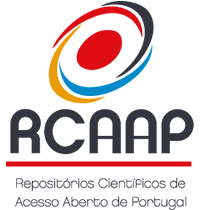Diagnostic methods of leishmaniosis in dogs: state-of-the-art
DOI:
https://doi.org/10.48797/sl.2023.68Keywords:
PosterAbstract
Background: Canine leishmaniosis (CanL) is caused by Leishmania infantum transmitted by the bite of phlebotomine sand flies [1]. Objective: This systematic review aims at providing the most updated information about the laboratory diagnosis of leishmaniosis in dogs using traditional methods and innovative techniques. Methods: A bibliographic search was performed on 23 February 2023 in Scopus targeting all currently available literature up to 22 February 2023 using the following keywords: ("Canine leishmaniosis" OR "Leishmania" OR "Leishmaniosis in Dogs" OR "Visceral leishmaniasis" OR "cutaneous leishmaniasis" OR "leishmaniasis") AND ("traditional diagnosis" OR "biochemical profile" OR "clinical analysis" OR "complete blood count (CBC)" OR "cytology" OR "hemogram" OR "PCR" OR "serology" OR "urinalysis") AND ("innovative diagnostic techniques" OR "molecular diagnostic test" OR "rapid diagnostic tests" OR "spectroscopy POC") AND ("diagnostic performance"). Results: CanL laboratory diagnosis is traditionally carried out directly or indirectly, with methods including molecular techniques, quantitative serological methods, specific serology and also the evaluation of hematological and biochemical parameters [2]. Innovative techniques address point-of-care applications, e.g.DNA-probes based on gold nanoparticles. Conclusions: Traditional diagnostic methods vary in their simplicity of use,however, these methods require large sample volumes, which cannot always be collected from patients and may pose welfare concerns. Innovative techniques should provide high method accuracy while using low sample volumes and being reagentless, reducing costs and applying green chemistry principles.
References
1. Torrent, E.; Planellas, M.; Ordeix, L.; Pastor, J.; Rodon, J.; Solano-Gallego L. Serum Symmetric Dimethylarginine as an Early Marker of Excretory Dysfunction in Canine Leishmaniosis (L. infantum) Induced Nephropathy. Vet Med Int 2018, 7517359.
2. Salant, H.; NachumBiala, Y.; Feinmesser, B.; Perelmutter, M.; Baneth, G. Early onset of clinical leishmaniosis in a litter of pups with evidence of in utero transmission. Parasit. Vectors 2021,14, 326.
Downloads
Published
How to Cite
Issue
Section
License
Copyright (c) 2023 C. P. Penelas Costa, J. C. Prata, L. Cardoso, T. G. Barroso

This work is licensed under a Creative Commons Attribution 4.0 International License.
In Scientific Letters, articles are published under a CC-BY license (Creative Commons Attribution 4.0 International License), the most open license available. The users can share (copy and redistribute the material in any medium or format) and adapt (remix, transform, and build upon the material for any purpose, even commercially), as long as they give appropriate credit, provide a link to the license, and indicate if changes were made (read the full text of the license terms and conditions of use).
The author is the owner of the copyright.









